Fudd Friday: Is .303 British The Ultimate Fudd Cartridge?

Ask an American shooter what the ultimate Fudd cartridge is, and they’ll probably tell you .30-30, or maybe .308 or .30-06. But if you ask in Africa, Australia, or Canada, they’ll probably tell you it’s the .303 British, and with good reason. By gross tonnage, it might have laid down more big game than all those other three cartridges put together.
Three-Oh-Three Firepower @ TFB:
A Military History
The stereotypical Fudd loves a cartridge with a military history, and boy, the .303 British has that in spades. Introduced in 1889 for the Lee-Metford bolt-action rifle, the .303 British is still in action today. Although they’re being phased out of front-line use, Lee-Enfield rifles in .303 British are still in police armories all over India, as well as Pakistan and Bangladesh. The Canadian Rangers were issued Lee-Enfield rifles until 2018. Forget about “Muh two world wars.” The .303 British was used in those same two world wars, along with the Boer War, the Boxer Rebellion, the Congo Crisis, the Korean War, the Malayan Emergency, the Suez Crisis, the Irish War of Independence, the Six Day War and countless smaller conflicts around the world over the past 130-plus years.
As the name implies, the .303 British cartridge was designed and primarily produced and used by the Brits and their Commonwealth allies. But with millions of .303 military rifles made, they found their way into the hands of other militaries and paramilitaries (post-World War II Haganah fighters and Afghani tribesmen being prime examples).
And, with millions of rifles surplused out of service after the world wars, the sporting market was there to buy them up and sell them to hunters.
A Sporting History
Actually, the .303 British was used by hunters as early as the late 1800s. With a ready supply of government ammo available, military officers and other people in British colonies bought the Lee Speed and other sporting rifles chambered in this cartridge. These weren’t just bolt-actions; some great break-action singles or doubles were made around this cartridge, and the rimmed design worked well for these applications. Here in North America, Winchester sold its Model 1895 in .303 British. Those rifles turn up regularly in Canada, and outside of the Savage 99, they were one of the most powerful lever guns that you could buy for a long time.
W.D.M. “Karamojo” Bell might be the most famous early adopter of the .303 British as a sporting cartridge; he used one to knock over many head of African game. One of his first gigs as a professional hunter was blasting lions with a single-shot .303 for the Uganda Railway, a job for steely nerves, a steady hand—and a cartridge you could rely on. Although he’s best known for shooting elephants with a .275 Rigby, he also used a Lee-Enfield at times.
He was a rarity in the world of professional hunters, and most people would be best to avoid using such light calibers for such heavy work. However, other men in the same line of work used .303 as well, and many farmers and other men on the African frontier would have used a Lee-Enfield for the same practical reasons: they were accurate enough, and the ammo was readily available.
After the world wars, the ammo was even more readily available—especially after World War II.
The .303 Selling Spree
By the end of World War II, the British Commonwealth had approximately 42 bajillion rounds of .303 to dispose of. You’d never get an official number of how many rounds they had to get rid of, but I know that the Canadian military took literal boatloads of this stuff out into the Atlantic and dumped it overboard. And they sold a lot more of it off to other militaries and civilians. And they sold the rifles that chambered the round.
When I was a kid in eastern Canada, 40 years after World War II ended, these rifles were still available from army-navy stores for low prices. We’re talking a hundred bucks for a basic sporterized Lee-Enfield, with the forestock cut down and maybe some different sights installed, and the original 10-round magazine included.
In the States, a thrifty hunter might have bought a Winchester 94 (or if they were really frugal, a Savage 219 or 170 or 340) in .30-30 for an economical deer gun. In Canada, you bought a .303. It was cheap, it hit hard, and it was powerful enough to flatten any big game you’d come across.
It’s almost impossible to overstate how popular this cartridge was in Canada. The .303 British was so popular that a Canadian surplus importer used to rechamber perfectly good SVT-40 rifles to .303 British and re-stock them for hunters. It was so popular that, until very recently, eastern Canada’s largest gun retailer could only keep used .303 rifles in stock for a few hours before they were gone, mail-ordered to some rural customer. It was so popular that about a decade ago, a Canadian distributor actually special-ordered a run of Ruger #1 single-shot rifles in .303 British, and had no trouble selling them all.
It was the same in other Commonwealth countries. New Zealand hunters bought these rifles by the truckload and shot goats and red stags. Aussies bought a pile of old .303 rifles and used them for kangaroos, sambar, crocs and whatever else they could find. And through all the former British colonies, inventive keeners wildcatted the .303 to all sorts of different combinations.
But unlike the .30-06 which begat the .270 or the .308 which begat the .243, the .303 British’s hybridized offspring never really gained much popularity. Fudds wanted their .303 British in 150-grain loads for deer, or 180-grain loads for moose (or even 215-grain, when they were factory-made).
The .303 British Today
Despite the millions of rifles made in .303 British, and the millions of pounds of big game they’ve shot, the cartridge is practically dead in the mid-2020s—and COVID killed it. Sort of.
The changes in the North American ammo manufacturing industry after COVID-19 (not to mention the panic buying caused by politics) mean that cartridges like .303 British are going to see smaller, more expensive production runs, or vanish altogether. And it’s the same thing for firearms manufacturing. Nobody wants to make rifles chambered for ancient rimmed cartridges; they want to streamline production and make rifles in exciting, hyped-up new calibers, in straight-wall or hyper-magnum configuration.
The result: No new .303 British rifles since the Ruger #1, and that was an anomaly. Selection of sporting ammunition has decreased, and it has gotten prohibitively expensive. It’s too bad; most of these rifles were rugged and reliable, and filled the freezer for decades. Their cheap, commercialized replacements may be more accurate, but no more effective, and the old .303 British surplus guns will be discarded eventually by the shooters in the Commonwealth, just like the Scandinavians cast off their old Stiga and Carl Gustaf Mauser sporters in favor of new guns.














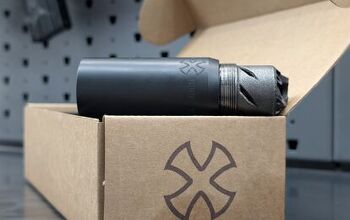
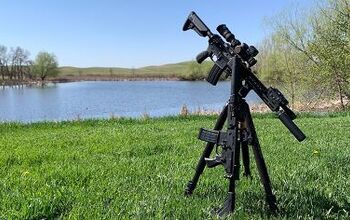
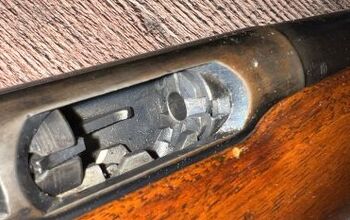




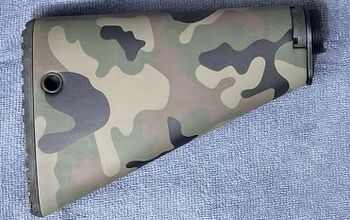


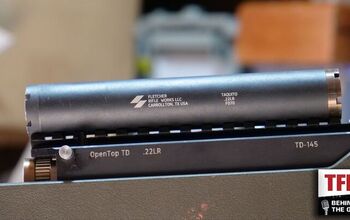
![[SHOT 2025] Dead Air Unveils Sandman X Suppressor](https://cdn-fastly.thefirearmblog.com/media/2025/01/24/18181/shot-2025-dead-air-unveils-sandman-x-suppressor.jpg?size=350x220)


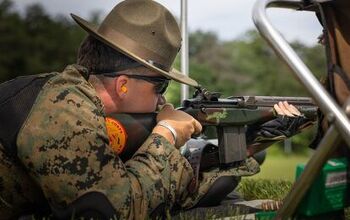
![[SHOT 2025] XS Sights Has New Pistol Offerings At SHOT](https://cdn-fastly.thefirearmblog.com/media/2025/01/23/02001/shot-2025-xs-sights-has-new-pistol-offerings-at-shot.jpg?size=350x220)

Comments
Join the conversation
After reading this article, and the uncertainty of the tarriff situation, I think I should stock up on a lot more 303 ammo to feed my two SMLE's. I have a No.1 Mk Iii* from 1949 with a PH-5A sight and a No.1 MkV from the first run in 1922. Both are in great condition, very accurate, and a blast to shoot. The thought of them becoming safe-queens or static displays is not pleasant!
Good quality aftermarket brass is thankfully available by the shedload for the reloader. I even load .311 projectiles in my Mosin brass where it shines, as the Soviet concept of 'precision rifling' is dubious at best. The Ockers have made more than a couple of .303 based wildcats, both bigger and smaller than 30 cal. I knew a farmer in NZ that swore by his much- abused Bren Gun, loosing streams of 303 Dum-dum's that he'd made himself, against feral pigs....